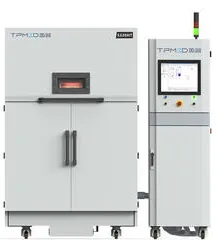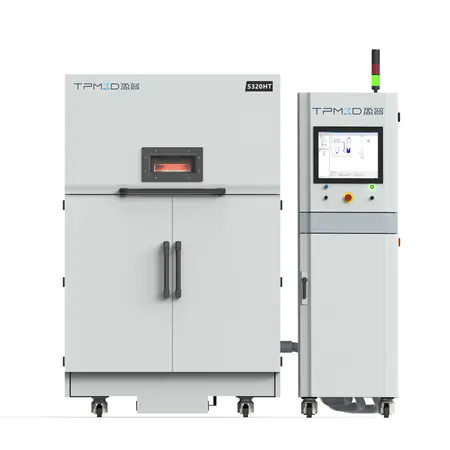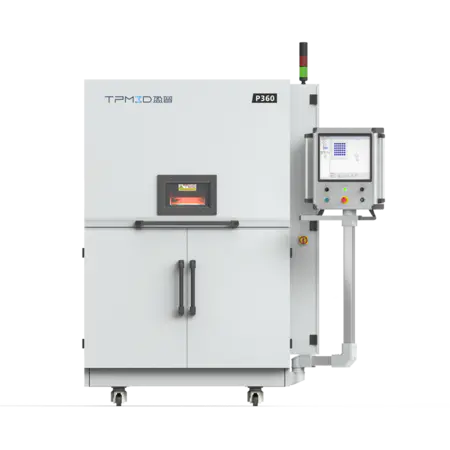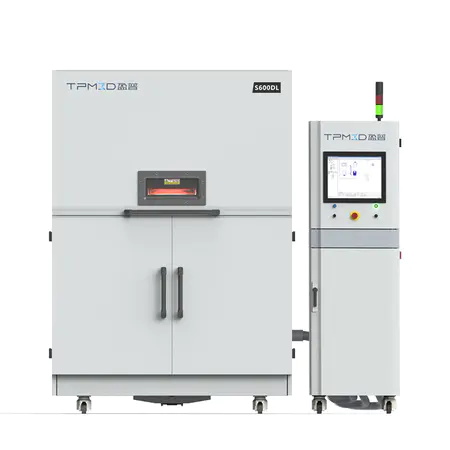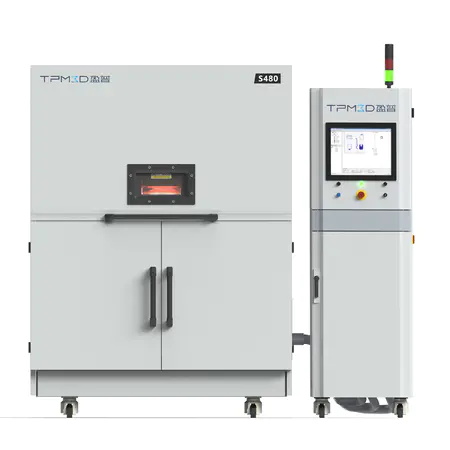TPM 3D Asia Advanced Materials Printing Center
TPM 3D Asia advanced materials printing center located in Jiangsu Province, cover the area with more than 1000 m2. The center consists of intelligent manufacturing 3D printing display platform, industrial and advanced materials intelligent printing center, medical sterile R&D experiment labs, and SLS post processing center and multimedia conference zone.
3D Printing Digital Medical Center
The center construction includes three phases, we can provide orthopedic insoles, orthopedic pillows, scoliosis braces, knee orthoses, application of surgical guides for head, pelvis, spine and knee joints and 3D printing of braces, as well as orthopaedic standardized implant products development.
Our research
TPM3D has successfully developed 10+ laser sintering additive manufacturing systems, and more than 10 kinds of polymer powder printing material for high-quality parts manufacturing, has more than 30 national patents as well.
Related Products
More items about large sacle sls printer
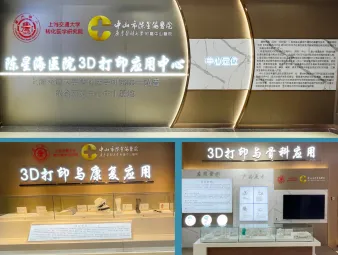
We Have The Best Solutions for Your Business
TPM3D technical team has been engaged in industrial 3D printing business since 1999 and has become the industry brand with 20 years focusing on 3D printing service。
TPM3D has various customers at home and abroad from the fields of automobile, electrical appliances, electronics, medicals, cultural & creative, education, aerospace, such as Guangzhou Automobile, Dongfeng Motor, Gree Group, LG Electronics, TTI, Fohan Service Bureau, Tongji University, Southern University of Science and Technology, University of Texas at Austin, and Massey University Auckland.
Sustainable Manufacturing of Large SLS Printers
Sustainability is becoming more and more of a focus in the manufacturing industry. With growing awareness of environmental concerns and pressure to reduce carbon emissions, manufacturers are seeking ways to minimize their environmental impact while still producing high-quality goods. One technology that can contribute towards more sustainable production is large-scale selective laser sintering (SLS) printing.
The Role of Large SLS Printers in Custom Manufacturing
Large-scale selective laser sintering (SLS) printing has become a highly desirable technology in custom manufacturing. SLS printers use lasers to selectively fuse layers of powdered material together, producing complex geometries and intricate designs that would otherwise be impossible or impractical using traditional manufacturing techniques. Custom manufacturing typically involves producing products in small amounts or one-offs tailored specifically to a customer's needs. Large-scale SLS printing makes this possible since it enables quick and cost-effective production of highly customized parts with minimal tooling requirements.
Advantages of Large SLS Printers for Production
Large SLS printers are increasingly being utilized for the production of end-use parts in industries such as aerospace, automotive, and medical. Here are some of the advantages associated with using large SLS printers:
Customization: Large SLS printers offer on-demand customization of parts without the need for expensive tooling or setup costs. This makes it simpler to produce small batches of customized parts, cutting down on lead times and inventory costs.
Material Flexibility: Large SLS printers can use a range of materials, such as plastics, metals and composites, making them suitable for many uses. This versatility gives designers and innovators more design freedom to innovate while producing parts with unique material properties.
Sustainability: Large SLS printers produce less waste compared to traditional manufacturing methods, as they only use the necessary amount of material for each part. Furthermore, SLS printers can utilize recycled materials, making them an environmentally friendly option when producing goods.
Advantages of Large SLS Printers for Prototyping
Faster Production: Large SLS printers can print large prototypes in a fraction of the time it takes with traditional methods. This is because SLS printers use an additive manufacturing process which is faster than subtractive manufacturing techniques.
Cost-Effective: Large SLS printers can produce complex prototypes without the need for costly molds or tooling, saving money while providing more design freedom and quicker iteration.
High-Quality Output: Large SLS printers are capable of creating accurate prototypes with smooth surfaces and intricate details, which is especially beneficial in industries such as aerospace and automotive where accuracy and dependability of prototypes is crucial.
User Reviews
What users say about TPM 3D printing
Frequently Asked Question
Do you have any question?
SLS technology is used for selective laser sintering of powdered materials to create 3D objects with complex geometries.
Large SLS printers can be expensive and require specialized knowledge to operate.
SLS printers with large dimensions are used in many industries, including aerospace, automotive, medical, and other areas that require large, complex parts with high precision.
The advantage of using a large SLS printer is the ability to print larger and more complex parts in a single print job.
Large SLS printers can print parts with a wide range of materials, including plastics, metals, and ceramics.

